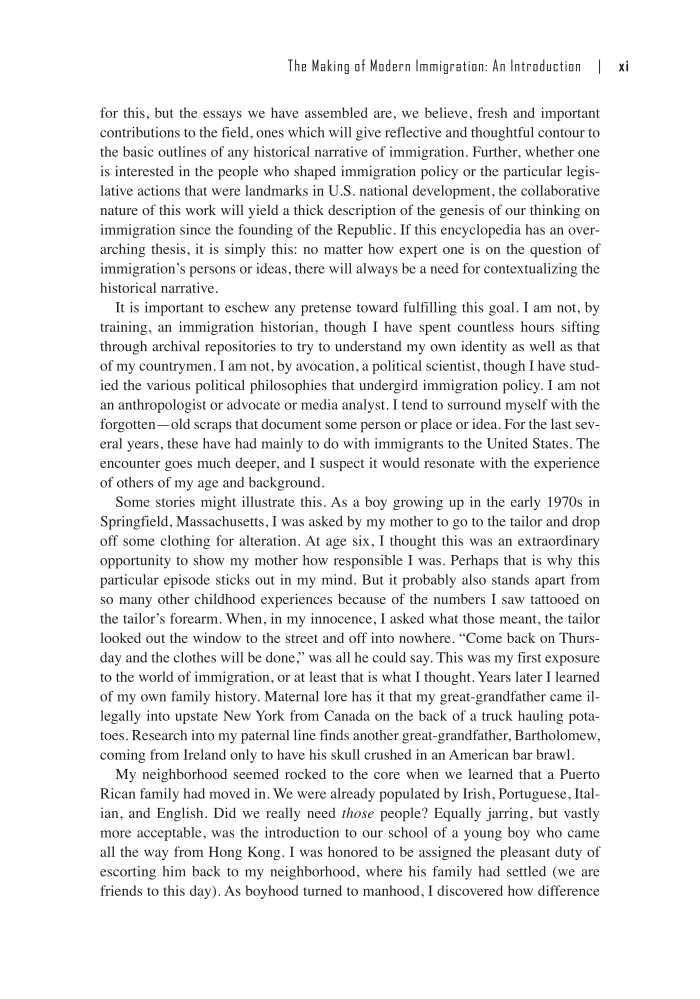xi The Making of Modern Immigration: An Introduction | for this, but the essays we have assembled are, we believe, fresh and important contributions to the field, ones which will give reflective and thoughtful contour to the basic outlines of any historical narrative of immigration. Further, whether one is interested in the people who shaped immigration policy or the particular legis- lative actions that were landmarks in U.S. national development, the collaborative nature of this work will yield a thick description of the genesis of our thinking on immigration since the founding of the Republic. If this encyclopedia has an over- arching thesis, it is simply this: no matter how expert one is on the question of immigration’s persons or ideas, there will always be a need for contextualizing the historical narrative. It is important to eschew any pretense toward fulfilling this goal. I am not, by training, an immigration historian, though I have spent countless hours sifting through archival repositories to try to understand my own identity as well as that of my countrymen. I am not, by avocation, a political scientist, though I have stud- ied the various political philosophies that undergird immigration policy. I am not an anthropologist or advocate or media analyst. I tend to surround myself with the forgotten—old scraps that document some person or place or idea. For the last sev- eral years, these have had mainly to do with immigrants to the United States. The encounter goes much deeper, and I suspect it would resonate with the experience of others of my age and background. Some stories might illustrate this. As a boy growing up in the early 1970s in Springfield, Massachusetts, I was asked by my mother to go to the tailor and drop off some clothing for alteration. At age six, I thought this was an extraordinary opportunity to show my mother how responsible I was. Perhaps that is why this particular episode sticks out in my mind. But it probably also stands apart from so many other childhood experiences because of the numbers I saw tattooed on the tailor’s forearm. When, in my innocence, I asked what those meant, the tailor looked out the window to the street and off into nowhere. “Come back on Thurs- day and the clothes will be done,” was all he could say. This was my first exposure to the world of immigration, or at least that is what I thought. Years later I learned of my own family history. Maternal lore has it that my great-grandfather came il- legally into upstate New York from Canada on the back of a truck hauling pota- toes. Research into my paternal line finds another great-grandfather, Bartholomew, coming from Ireland only to have his skull crushed in an American bar brawl. My neighborhood seemed rocked to the core when we learned that a Puerto Rican family had moved in. We were already populated by Irish, Portuguese, Ital- ian, and English. Did we really need those people? Equally jarring, but vastly more acceptable, was the introduction to our school of a young boy who came all the way from Hong Kong. I was honored to be assigned the pleasant duty of escorting him back to my neighborhood, where his family had settled (we are friends to this day). As boyhood turned to manhood, I discovered how difference
Document Details My Account Print multiple pages
Print
You have printed 0 times in the last 24 hours.
Your print count will reset on at .
You may print 0 more time(s) before then.
You may print a maximum of 0 pages at a time.
































































































































































































































































































































































































































































































































































































































































































































































































































































































